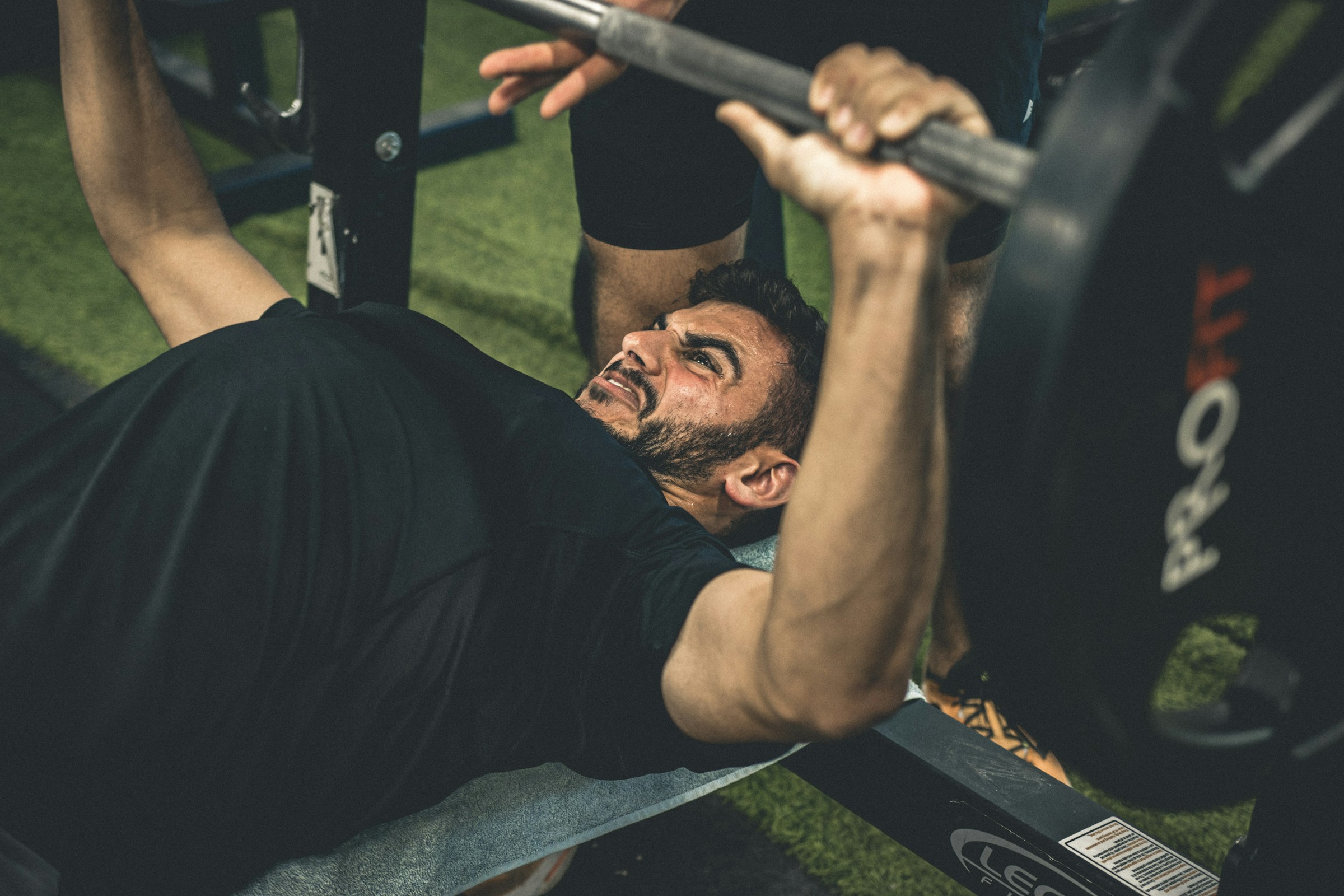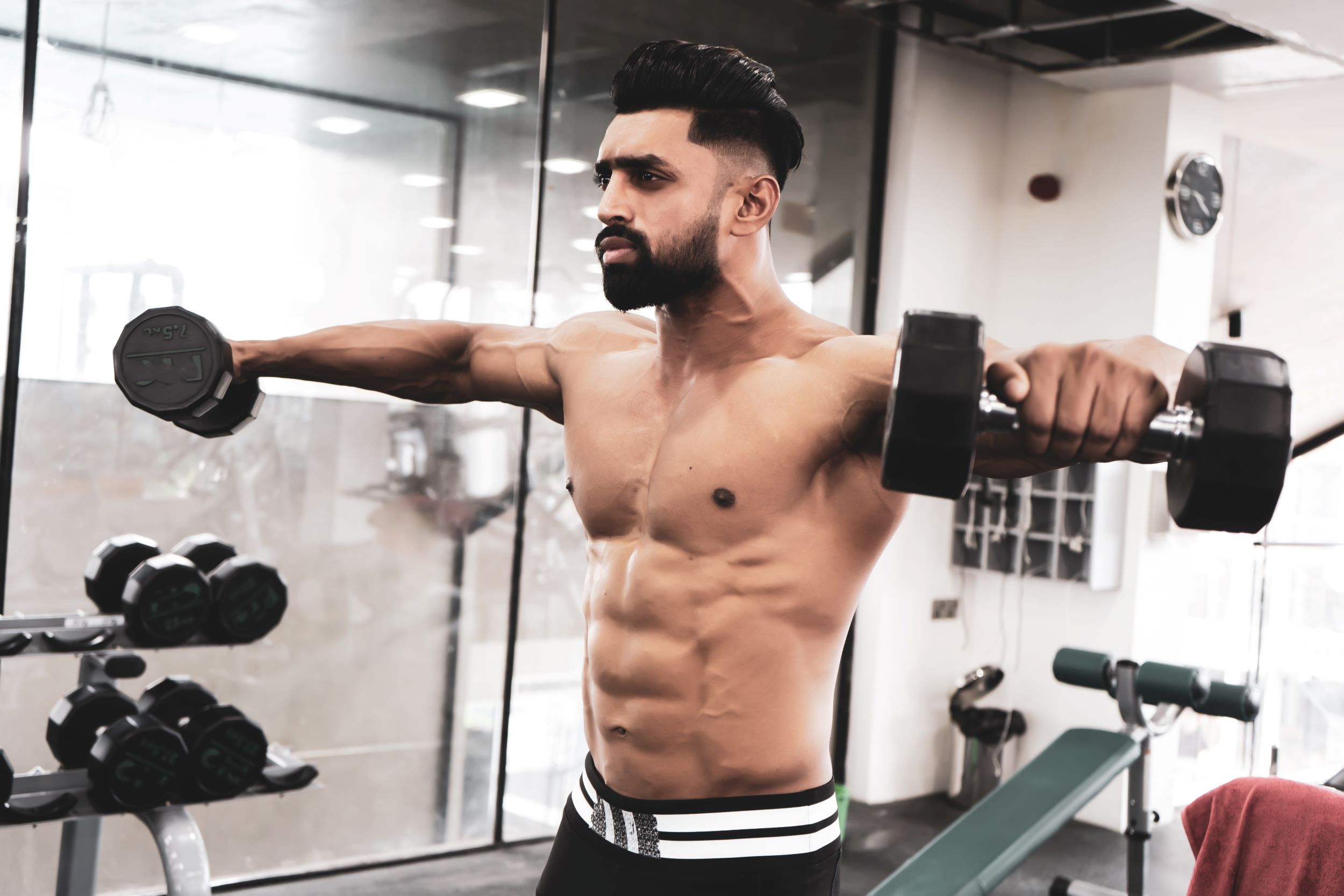
Life pushes and pulls you in different directions, but push day is the time to push the boat out or, more specifically, push the barbell or dumbbell up. You use your pushing muscles all the time, including pushing open doors and pushing a cart around the grocery store. From the old-fashioned push-ups to a classic bench press, we’ve listed the top 6 push day workouts to flex those upper body muscles.
What is a push-day workout?

You use certain upper body muscles for pushing, like your shoulders, triceps, and chest. A push-day workout incorporates specific exercises that work these pushing muscles and improve muscle strength and size. Think of compound pressing exercises, such as push-ups and bench presses, as well as isolation exercises, like lateral raises.
With push-day workouts, you use these muscles to push or press your body away from an object or to push an object away from your body.
1. Push-ups

Push-ups are a classic exercise that requires no equipment. Beginners, advanced weightlifters, and those in between can incorporate push-ups into any push-day workout routine.
How to perform push-ups:
- Start on all fours with your hands about shoulder distance apart.
- Extend your legs behind you so your spine and legs form a straight line, and your knees and hips are in the plank position.
- Lower yourself down until your chest touches the floor and your elbows are at a 90-degree angle.
- Push yourself back up to straighten your arms.
- Repeat for your desired number of reps.
Top tip: try to keep your body straight in the plank position and make sure your hands are shoulder-width apart.
2. Dips

Dips have an interesting name because they really do involve using parallel bars to dip your body down before pushing yourself back up again. If you struggle with dips and you can’t lift your entire body weight, you can always try assisted dips with a machine instead.
How to perform dips:
- Stand between parallel bars and grip the bars with your elbows bent.
- Straighten your arms and lift your body up vertically.
- Lower or dip your body down by bending your elbows until your arms are at a 90-degree angle. Try to make sure your upper arms are parallel to the floor.
- Push down through your hands, straighten your arms, and lift your body back up again.
- Repeat for your desired number of reps.
Dips are a superior exercise for your chest and triceps.
3. Bench press

The bench press is another popular exercise that strengthens your triceps, chest, and front deltoids. Impressively, studies have shown that 2-3 months of bench press training in untrained individuals results in a 10-20% increase in the muscle thickness of the chest muscles. Bench pressing is also known to promote muscle growth in the lateral head of the triceps.
How to perform barbell bench presses:
- Lie on a flat bench and grip the barbell a little wider than the width of your shoulders.
- Press your feet into the ground, take a deep breath, and unrack the bar with an overhand grip.
- Carefully bend your elbows and lower the bar until it touches your chest.
- Push the bar back up and straighten your arms while you’re exhaling.
- Take another deep breath and repeat for the desired number of reps.
You can also try other versions of the traditional bench press, like the incline bench press or the incline dumbbell bench press.
4. Overhead press

An overhead press is true to its name because you push or press the bar up over your head and bring it back down again. This exercise is more challenging for some, and it’s also called the military press, with good reason. A traditional overhead press is performed standing up, but you can also try other versions of this exercise by sitting or using dumbbells.
How to perform overhead presses:
- Take a deep breath and unrack the bar.
- Ensure you’re gripping the bar a little wider than your shoulders and starting with the bar against your front deltoids.
- Tighten your core and tuck your elbows in.
- Push the barbell up vertically over your head and straighten your arms while exhaling.
- Inhale while bending your elbows and carefully lowering the weight back down to your front deltoids.
- Repeat for your desired number of reps.
You use most of the muscles in your body to stabilize you during an overhead press.
5. Lateral raise

The lateral raise is a supreme push-pull exercise for targeting your lateral deltoids and all of your shoulder muscles. You can perform the lateral raise in different ways using dumbbells, a resistance band, or a cable machine.
How to perform a lateral raise with dumbbells:
- Standing up with your arms by your sides, hold one dumbbell in each hand and slightly lean forward into the starting position.
- Slowly lift the dumbbells outwards until your arms are straight out by your sides, your upper arms are parallel with the floor, and you’re standing with your back straight.
- Slowly lower the dumbbells back to the starting position.
- Repeat for your desired number of reps.
Top tip: It’s best to avoid using overly heavy weights for this movement and focus more on control and stability.
6. French press

The French press is an overhand-grip, overhead triceps extension exercise that you can perform sitting down, standing up, or on an incline bench. The French press or curl works, stretches, and expands your triceps muscles.
Here’s how to perform a French press:
- Stand with your feet about hips-distance apart.
- Hold the dumbbell over your head with your elbows pointing forward.
- Your upper arms should remain in place, and your core should be stable.
- Bend your elbows and lower the weight back behind your head.
- Extend and straighten your elbows to lift the weight back up overhead.
- Hold the position before repeating for your desired number of reps.



